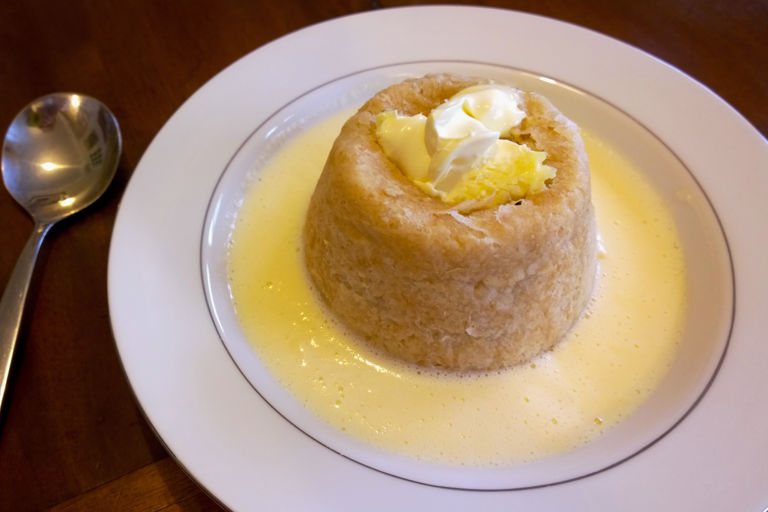Apple and quince hat with bay-infused custard
Spicy and succulent, these apple and quince hats are a fantastic remedy to the barrage of healthy eating which signifies the start of the year.
By all accounts, I am not doing enough to make sure it snows around our way. Each morning, two pairs of eager eyes have been scanning the map on the telly, with ears listening to the dulcet tones of Carol Kirkwood, weather presenter for the BBC. And each time, demands have been issued that at the very least we should all move north, to where the snow is and then we could all play in the snow and not go to school. Apparently the sleet has been rubbish and it’s been far too cold to go outside (or walk to school) but if it did snow then they wouldn’t mind so much. Because well, it’s snow and snow is great. So Dad, why haven’t we had any snow yet?
Yes, this is the ongoing angst in our house at the moment and at this rate, I am thinking about going out to buy a snow machine (it would be cheaper than moving) but in the meantime, I have been doing my best to keep them quiet by shovelling suet based puddings into their little mouths. Such as good old fashioned apple and quince hats.
Curious surname for a dessert that - ‘hat’. We are all familiar with pies, crumbles, syllabubs, sponges, dicks and tarts but ‘hat’ does seem odd to me and to be honest I am not entirely sure what it means or where it comes from. I should do a bit of digging around and boost my knowledge of food history really.
Although, perhaps it’s because this pudding does indeed look like a hat. Yes, that’s probably it.
What I definitely do know is that these fat-laden, calorific puddings, spicy and succulent are a fantastic remedy to the prolonged barrage of healthy eating that normally occurs around this time of year. Quince can be tricky to find but seek one out if you can, as they lend a lovely aromatic quality to this pudding, which ties in nicely with the bay infused custard and I do like to make individual hats using mini-pudding basins. But you could always make this with a large basin if you like. The dollop of clotted cream on top might be a touch unnecessary, but what the hell, we’ve got to get through February yet.
A treat to eat on a dreary, windswept winter day in other words; especially after going out for a long walk. And if it snows, even better. But don’t tell my children you’ve been out in it.
Ingredients
Metric
Imperial
For the pudding
- 275g of self-raising flour
- 150g of suet
- salt
- 100ml of water
- 2 Bramley apples
- 1 quince, large
- 50g of sultanas
- 50g of caster sugar
- 1 tsp ground cinnamon
- 1 tsp ground ginger
- 4 cloves
- 1 lemon, juiced
- clotted cream, to serve
- butter, for greasing
Custard
- 450ml of whole milk
- 4 egg yolks
- 50g of caster sugar
- 2 bay leaves, fresh
Method
Get in touch
Please sign in or register to send a comment to Great British Chefs.



